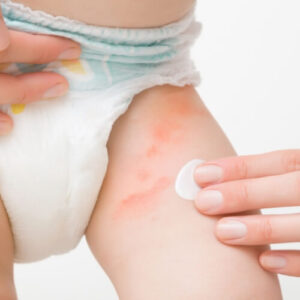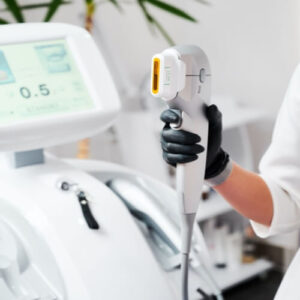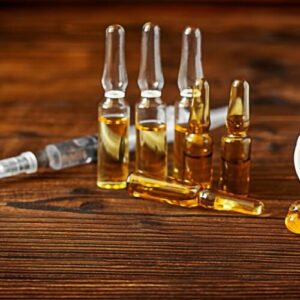high cholesterol
High cholesterol and its symptoms
Taviv
Hypercholesterolemia is considered a suitable risk factor for cardiovascular diseases and atherosclerosis.
Usually this increase is not accompanied by any clinical symptoms, but there are many ways to predict the risk of high cholesterol and thus prevent its effects and complications.
What is cholesterol?
Cholesterol is an essential fatty substance in all body cells, as well as many types of hormones, as well as vitamin D.
The cholesterol that a person needs is produced in the liver, in addition it is found in animal food products such as meat, poultry, dairy products, egg yolks and fish.
And the fact that these foods are high in fat can stimulate the liver to secrete more cholesterol, which can lead to high cholesterol levels.
Cholesterol in the blood is bound to proteins, and when the two come together they are called lipoproteins. There are three main types of lipoproteins:
- High-density lipoprotein (HDL): It is called (good cholesterol) and must be kept at relatively high levels.
- Low-density lipoprotein (LDL):It is called (bad cholesterol) and must be kept at relatively low levels.
- When its level in the blood increases, it accumulates in the walls of the arteries, which restricts the flow of blood to vital organs such as the heart, brain and other organs, which leads to the appearance of blood clots.
- TG Triglycerides: Its high is also a cause of cardiovascular diseases, but less than LDL.
The amount of total cholesterol, as well as the amount of “HDL”, “LDL” and triglycerides, is measured in a blood test, and the recommended blood cholesterol levels vary between those who have a higher or lower risk of developing artery disease.
Symptoms of high cholesterol
There are no visible symptoms of high cholesterol, and it is usually detected because of the problems that occur, as the risk of developing the following increases:
- Heart Attack
- brain attack
- Erectile dysfunction
- Arterial diseases
- Arterial ischemia of the limbs and claudication
- Induced diabetes or reversal of existing diabetes
- In some cases, many fat deposits can appear on the eyelids or in certain areas of the trunk (chest and abdomen).
cause high cholesterol in the blood
Many factors cause high blood cholesterol, especially the “bad” LDL cholesterol, and these factors can be classified into two groups:
1- The first group
Modifiable causes, meaning that can be changed by man, include:
- An unhealthy diet containing high levels of saturated fat.
- Cigarette smoking contains acrolein which inhibits the action of “good” HDL cholesterol, in addition to raising the level of “bad” LDL cholesterol.
- Lack of physical activity and obesity, which cause an increase in the level of bad cholesterol “LDL” and a decrease in the level of good cholesterol “HDL”.
- Constant drinking of alcohol
2- The second group
The second group includes permanent causes, that is, it is impossible or difficult to change them:
- aging
- Gender, males are more susceptible than females, because the estrogen present in females increases the levels of “good” HDL cholesterol.
- Diseases such as diabetes or high blood pressure.
- Having a family history of stroke or heart disease, or even diabetes or high blood pressure.
- Some diseases of the liver, kidneys, thyroid gland and pancreas.
- There is also a genetic condition called “familial hypercholesterolemia”, which causes high cholesterol in the blood even in healthy people, and this condition is caused by a genetic change that is inherited from one of the parents.
- People with familial hypercholesterolemia also have high cholesterol from birth, which can lead to the early development of cardiovascular problems.
diagnosis
Your doctor may recommend that you check your cholesterol levels if:
- Diagnosed with heart disease, stroke or arterial disease.
- Has a family history of early cardiovascular disease.
- A close family member has a condition related to high cholesterol.
- weight gain.
- High blood pressure, diabetes or a health condition that may raise cholesterol levels.
A blood sample is taken and used to determine the amount of “bad” cholesterol “LDL”, “good” cholesterol “HDL” and other fatty substances such as triglycerides in the blood.
And the doctor asks not to eat for at least 10-12 hours before the test, this ensures that the food is completely digested without affecting the result of the operation.
The doctor reads the numbers of the test results and determines, based on them and according to the condition of each patient, the best method of prevention and treatment.
protection
The first step in preventing high cholesterol is maintaining a healthy and moderate diet with fatty foods as low as possible in saturated fats such as meat fat, pancakes, coconut and palm oils.
It is recommended to replace foods containing saturated fats with foods rich in unsaturated fats such as fruits, vegetables, whole grains and fish such as salmon and tuna.
These unsaturated fats are called “omega 3” and have a positive effect in lowering the “bad” LDL cholesterol levels and raising the “good” HDL cholesterol levels.
Lifestyle changes, such as regular exercise and quitting smoking, can make a big difference in your cholesterol.
Treatment of high cholesterol
Even when a diagnosis of high cholesterol is made, lifestyle changes are initially recommended before starting any treatment.
Changing the diet, quitting smoking and exercising more help lower cholesterol and prevent its recurrence.
If these measures do not help reduce blood cholesterol, and the person is still at risk of developing cardiovascular disease, the doctor may turn to drug treatment.
Cholesterol-lowering drugs include many types prescribed by the doctor on a case-by-case basis, the most famous of which are:
- Statins: and works to prevent cholesterol production in the liver.
- Ezetimibe: This is a drug that prevents the absorption of cholesterol from food.
- Bile acid barriers: Used to treat high levels of low density lipoprotein “LDL”.
- Fibric acid: These drugs are effective in lowering triglyceride levels, and moderately effective in lowering LDL.





